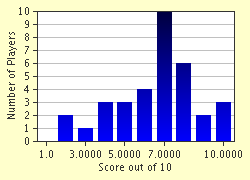Quiz Answer Key and Fun Facts
1. Like many European cities, the story behind Prague's founding is a mix of fact and legend. Prague was said to be the vision of 8th century Princess Libuse who foresaw a grand city centered around a castle on which river?
2. Which famous Duke of Bohemia was murdered by friends of his brother in the year 935? He is the patron saint of Prague and is immortalized in a Christmas carol.
3. This Czech saint was born in the year 1211. Her refusal to marry several prominent noblemen nearly caused several wars, and the cancelation of her marriage to Henry VII of Germany caused her father to declare war. Who is this patron saint of the Czech Republic?
4. What is the name of Prague's oldest university that was founded in 1348? It also the oldest in Central Europe and has the same name Prague's most famous bridge?
5. During the First Defenestration of Prague on July 30, 1419, who threw whom out the window?
6. According to popular legends, how did the three men who were defenestrated during the Second Defenestration of Prague on May 23, 1618 survive the fall?
7. Which Habsburg empress, who ruled over Prague and Bohemia from 1743-1780, was infamous for her antisemitism at least in the first twenty years of her reign and expelled the Jews from Prague in 1745?
8. Prior to World War I, control of Prague bounced around. The Archduke Franz Ferdinand, whose assassination sparked World War I, was in favor of turning the Habsburg empire into a triple monarchy consisting of Bohemia and which other two powers?
9. The Jewish population of Prague and all of Czechoslovakia were nearly decimated during World War II with over 77,000 losing their lives in the Holocaust. The names of these 77,000 Jews are written on the walls of which Prague building?
10. Communist Rule ended in Czechoslovakia in 1989. The nonviolent transition of power to Vaclav Havel is called the Velvet Revolution in the Czech Republic. But what is it called in Slovakia?
Source: Author
Joepetz
This quiz was reviewed by FunTrivia editor
bloomsby before going online.
Any errors found in FunTrivia content are routinely corrected through our feedback system.

